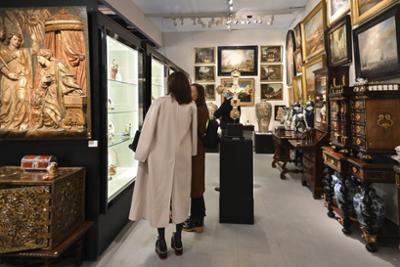

Manuel Castellano and historical nineteenth-century paintings

The interest in the recovery of old legends and episodes from the past led to the development of history painting as one of the great genres of the 19th century. Among its painters, Manuel Castellano, an artist of distinction, bequeathed an oeuvre with a broad analogy between painting, drawing and poetry.
Spanish nineteenth-century painting
It is well known that the painting of the nineteenth century needs to be revised due to the fact that the profuse heritage bequeathed to us by the artists of the time has been forgotten. One of the most important genres was undoubtedly History painting, where a large part of the works in question are currently housed in public institutions such as the Senate, the Congress of Deputies, Provincial Councils and even warehouses, sometimes making it impossible for the public to enjoy them to the full.
In 1992 the Prado Museum held the exhibition "History Painting in Spain in the 19th century" in response to this problem, which is not a current issue, and as a result of it, the pieces were extensively restored due to their deteriorated state of conservation. This arduous interest of the Pinacoteca Nacional in promoting the display of this ambitious genre is something that has endured over time, as we can see today after the reorganisation of the museum's rooms, where the 19th century paintings are displayed in more than ten rooms, one of the most important galleries in the museum being the one dedicated to large-format History Paintings. These large canvases were conceived as illustrations of certain episodes of our most remote past, and their significance allowed them to emphasise certain moral and political lessons for the enlightened audiences of the time.
Among many other factors, this invisibility of the genre is a burden that drags us down to the present day, unfortunately causing us to miss out on an immense number of interesting personalities of this century who would undoubtedly fill in the gaps that exist, helping us to form an enlightening idea of the spirit of this century.
The work of Manuel Castellano
One of the many forgotten artists in history is Manuel Blas Rodríguez Castellano de la Parra (1828-1880), better known as Manuel Castellano, an artist of the highest calibre who bequeathed us a body of work with a broad analogy between painting, drawing and poetry, among other arts. This Madrid artist, a contemporary of such names as Carlos de Haes and the Madrazo brothers, was one of the key figures in understanding the Spanish capital culture of the time. A painter of history and genre artist who, with an interest in theatre and photography, lived all his life in Madrid until his last years, which he spent on a scholarship at the Royal Academy of Fine Arts in Rome.
As a small example of the relevance of his work, after analysing it, we can see how closely the different arts, in this case drawing and painting, were linked to music and theatre. The latter is intimately linked to photography, which shows that, on innumerable occasions, the evolution of a single art was inherent, something that he committed progressively and in a common way.
In particular, I would like to mention one of his most spectacular works: Death of the Count of Villamediana (1868), belonging to the Museo del Prado, which represents one of the recurring themes of 19th-century Spain. The painting in question, which was inspired by an episode in the reign of Philip IV and won a second medal at the National Exhibition of Fine Arts of 1871, conceals an extensive study by the artist which, fortunately, is recorded in the preparatory sketches in the collection that bears his name in the National Library, revealing how painstakingly every detail was worked out.
The conception of the scene, on a real scale, has magnificent proportions and a play of light that makes for an ideal treatment of the space, which we can ascertain from the aforementioned public collection that it was inspired by the Convent of the Descalzas Reales in Madrid. But it is not only in this that the exceptional nature of this piece lies, but also in details such as the lantern, which reminds us of artists such as Goya, seeking depth, an invitation to approach and enter the scene, with a somewhat Velázquez-like chromatic range. In conclusion, we are talking about one of the artist's best canvases and, without doubt, worthy of the prize awarded.
Thus, with the argumentation presented, personally sufficient to create interest in the work of this personality, it will go unnoticed not only in the bibliography, but in the same way the genre belonging to this artist in the national market.
Blanca Navarro





